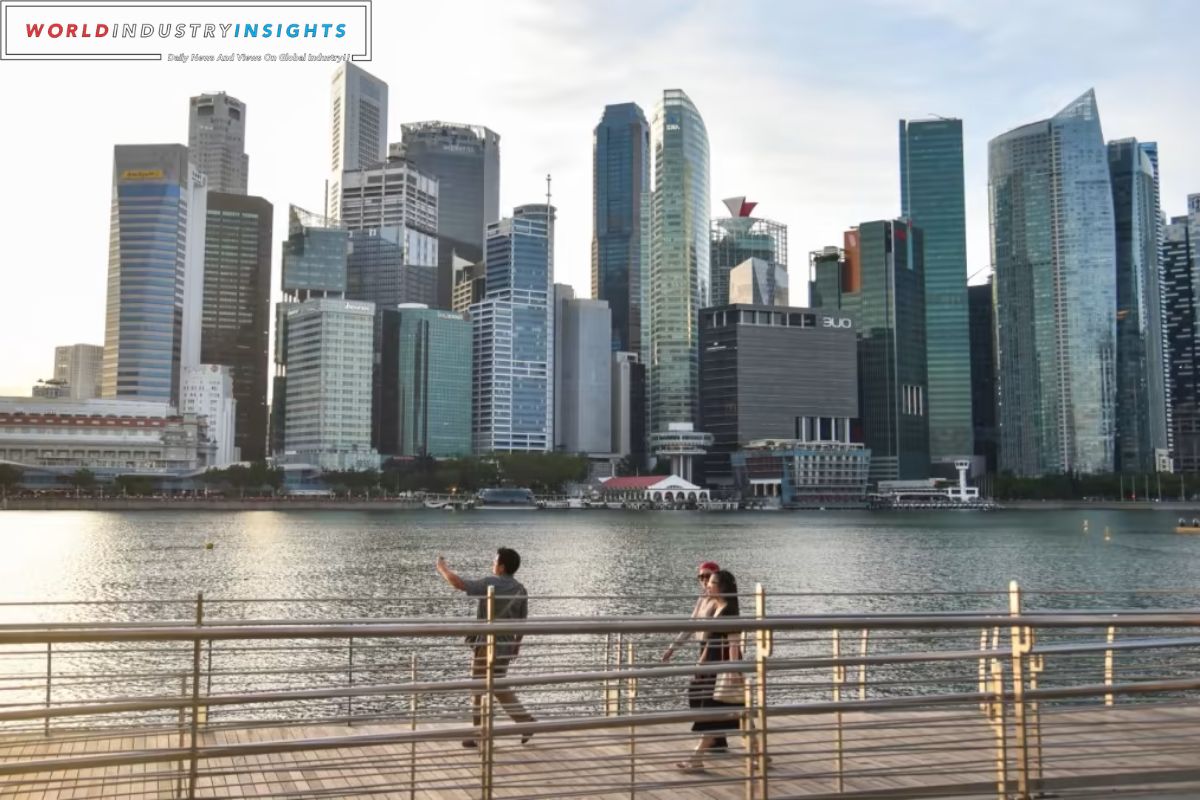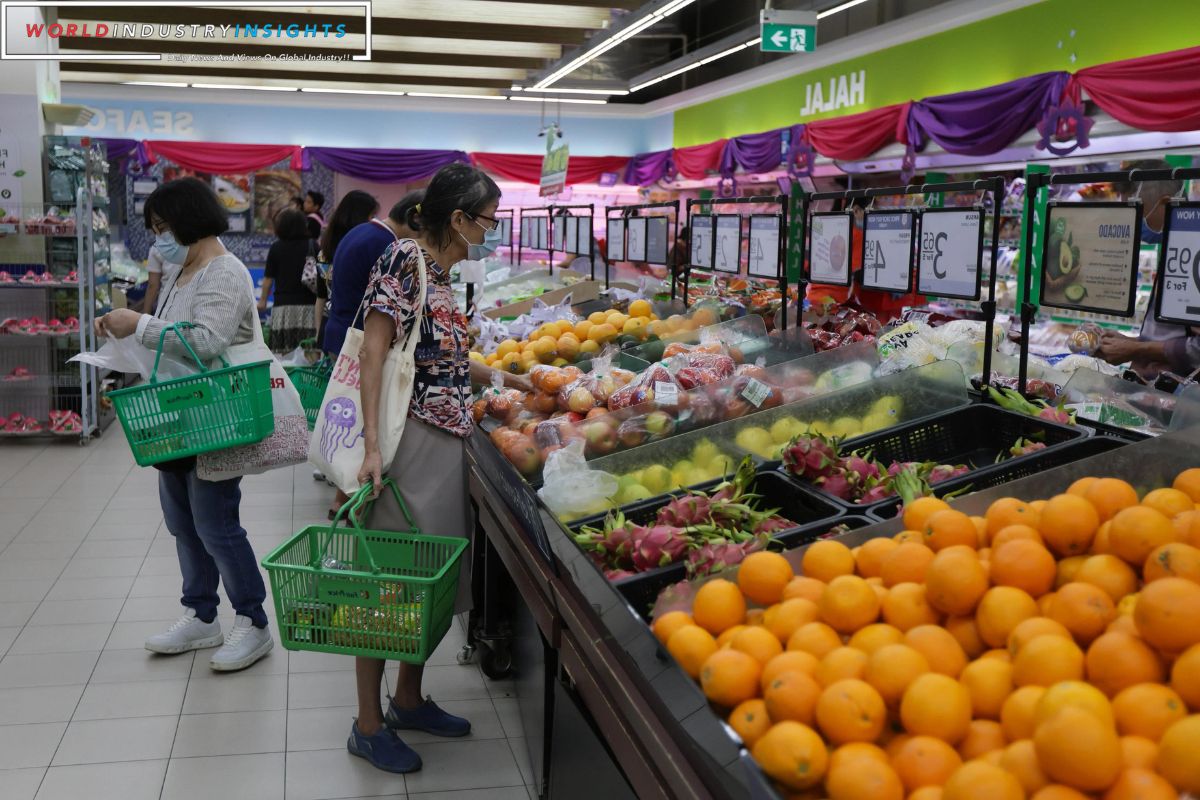Singapore’s Core Inflation: Singapore’s core inflation rate for November has eased to 3.2%, marking a significant decline from the previous month. This latest data point comes as a relief to policymakers who have been grappling with rising inflationary pressures in recent months.
However, it is crucial to take a closer look at the underlying factors driving this easing trend and assess its potential implications for the broader economy.
By analyzing the latest inflation rates, upcoming monetary policy review, positive manufacturing data, and the subsequent response from policymakers, we can gain a deeper understanding of Singapore’s economic landscape.
In this discussion, we will delve into these aspects and explore the future prospects for Singapore’s inflation and overall economic stability.
Key Takeaways
- Core inflation rate for November eased to 3.2%, reflecting moderation in consumer price inflation.
- The upcoming monetary policy review in Singapore will likely maintain an accommodative stance to support recovery and ensure price stability, with possible adjustments based on economic conditions and inflationary pressures.
- Positive manufacturing data, including a 1.0% year-on-year increase in output for November, indicates a strong demand for Singaporean goods domestically and internationally, improving productivity and contributing to economic growth.
- The moderated inflation rates and resilience of the manufacturing sector provide stability for consumers and businesses, highlighting the potential for increased production, exports, job creation, and higher incomes in Singapore’s economy.
Latest Inflation Rates and Forward-Looking Projections
The latest data on Singapore’s inflation rates and forward-looking projections reveal a slight easing in core inflation in November, while headline inflation dropped to a lower level, according to official figures released by the Monetary Authority of Singapore and the trade ministry.
The key consumer price gauge eased to 3.2% in November year-on-year, meeting expectations, while headline inflation dropped to 3.6%. The projected average for headline and core inflation in 2024 is 3.04.0% and 2.53.5%, respectively.
Also Read: Singapore and Japan Forge Green and Digital Shipping Alliance: A Leap Forward in Maritime Innovation
Core inflation, excluding private road transport and accommodation costs, decelerated from 3.3% in October. This indicates a moderation in inflationary pressures. The decrease in headline inflation from 4.7% in October aligns with economists’ November forecast of 3.8%.
These figures suggest that Singapore’s economy is experiencing a controlled inflationary environment, which is essential for sustainable growth.
Upcoming Monetary Policy Review
Scheduled for next month, Singapore’s central bank is set to conduct a review of its monetary policy settings, responding to the latest economic developments. This move comes as the central bank transitions from a semi-annual to a quarterly schedule for policy reviews.
With core inflation easing to 3.2% in November, the upcoming review will be crucial in determining the appropriate stance for monetary policy going forward. The central bank will carefully assess various indicators, such as inflation expectations, economic growth, and global uncertainties, to make informed decisions.
Given the current economic landscape, it is likely that the central bank will maintain its accommodative stance to support the recovery and ensure price stability. However, any unexpected changes in economic conditions or inflationary pressures could prompt adjustments to the monetary policy settings.
Market participants will closely monitor the outcome of the review for signals on the central bank’s future policy actions.
Positive Manufacturing Data”
With Singapore’s upcoming monetary policy review set to assess the appropriate stance for monetary policy, the positive manufacturing data released for November provides valuable insights into the country’s economic trends and inflationary pressures. The 1.0% year-on-year increase in manufacturing output indicates a steady growth in the sector, which is a positive sign for Singapore’s overall economic health.
This growth can be attributed to several factors:
- Strong demand: The increase in manufacturing output suggests that there is a strong demand for Singaporean goods both domestically and internationally. This indicates that the country’s exports are performing well and contributing to economic growth.
- Improved productivity: The positive manufacturing data also indicates that there has been an improvement in productivity within the sector. This could be due to technological advancements, process improvements, or increased efficiency in production processes.
- Resilience amid global uncertainties: Despite the ongoing global economic uncertainties and trade tensions, the fact that Singapore’s manufacturing sector continues to grow is a testament to its resilience. This bodes well for the country’s ability to weather external shocks and maintain stability in its economy.
Economic Implications and Policymaker Response
Given the combination of moderated inflation rates, proactive monetary policy adjustments, and positive manufacturing output, it is evident that Singapore’s economic landscape presents nuanced implications and requires a strategic response from policymakers.
The easing core inflation rate of 3.2% in November suggests that price pressures are being managed effectively, providing stability for consumers and businesses. This, coupled with the positive manufacturing data, indicates a resilient and competitive manufacturing sector that contributes to economic growth.
Policymakers must carefully monitor these indicators to make informed decisions that support Singapore’s economic stability and growth. The quarterly policy reviews demonstrate a commitment to adaptability, allowing for more responsive policymaking in a rapidly changing global economic landscape.
It is crucial for policymakers to strike a balance between managing inflation, supporting manufacturing output, and fostering sustainable economic growth to ensure long-term prosperity for the nation.
Summary and Future Prospects
Looking ahead, the future prospects for Singapore’s economy appear promising as the moderation in inflation rates and positive manufacturing output signal resilience and potential growth in the industrial sector. Here are three key reasons why Singapore’s economic outlook is optimistic:
- Slowdown in inflation: The easing of core inflation to 3.2% in November reflects a moderation in consumer price inflation. This is a positive development as it indicates that prices are becoming more stable, which can encourage consumer spending and business investment.
- Proactive policy adjustments: The shift to quarterly policy reviews demonstrates the authorities’ commitment to responding swiftly to changing economic conditions. This proactive approach allows for timely adjustments to monetary policy, which can support economic growth and stability.
- Resilient industrial sector: The positive manufacturing output contributes to the overall economic picture. With the industrial sector showing resilience and potential for growth, Singapore can benefit from increased production and exports, leading to job creation and higher incomes.
Conclusion Of Singapore’s Core Inflation
In conclusion, Singapore’s core inflation rate for November eased to 3.2%, indicating a slight decrease compared to previous months. This positive development suggests that the government’s efforts to control inflation are yielding results.
As policymakers review the monetary policy, they will likely consider the positive manufacturing data and its impact on the overall economy.
Going forward, Singapore can anticipate continued efforts to maintain stable inflation rates and promote economic growth.
Our Reader’s Queries
What is the core inflation forecast for Singapore in 2023?
By December, core inflation is expected to decrease to a range of 2.5-3.0% year-on-year. Looking ahead to 2023, MAS Core Inflation is projected to remain steady at around 4%, the same as last year. However, if we exclude the impact of the GST increase in January 2022, core inflation is expected to be lower than the previous year.
What is inflation like in Singapore?
The inflation rate in Singapore has risen by 4.7% year-on-year as of October 2023, with a month-on-month increase of 0.2%. Mas Core Inflation has also increased by 3.3% year-on-year, with a month-on-month increase of 0.4%. Food and transport costs have seen a significant increase, with a year-on-year rise of 4.1% and 8.4% respectively. To protect yourself against rising inflation, it is important to consider investing in assets that have a higher potential for growth, such as stocks or real estate. Additionally, reducing unnecessary expenses and finding ways to save money can also help mitigate the impact of inflation on your finances.
What is the core inflation rate in Singapore in October?
In October, Singapore’s core inflation bounced back to 3.3%, indicating a rise in prices. However, it is expected that prices will remain unstable in the upcoming months.
What is core rate of inflation?
Core inflation refers to the fluctuation in the prices of goods and services, excluding those from the food and energy sectors. This is because the prices of these items tend to be more unstable. By excluding them, core inflation provides a more accurate picture of the overall inflation rate.




